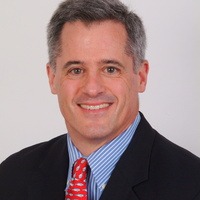Human Capital and the Internet of Things
Burt Hurlock
Technical visionaries often invoke terms like the Internet of Things, smart machines and machine to machine (M2M) to ease our fears about managing the upcoming brain drain that accompanies the graying American industrial workforce. The theory goes that one day, self-learning machines and massively parallel computing may replace the operator. Perhaps, but not in the foreseeable future. That’s because smart machines are very good at keeping us from doing dumb things, like stalling a commercial airliner, or pushing a gas compressor beyond safe tolerances. In the realm of black and white, the value of artificial intelligence is unassailable. But what about the rest of the time?
Myopic Intelligence
The Internet has accomplished little if not the ability to perform research and gather massive amounts of information quickly. Industrial automation combined with smart sensing technologies and advanced analytics have compounded the potential for knowledge and insight far beyond anything imaginable just ten years ago. What isn’t known is whether these technologies will ever account for enough variables to achieve sufficient situational awareness to best human judgment.
This author once stood on the floor of a nuclear power generation control room simulator and tapped on the glass of an analog meter to see if reenacting the famous scene from the movie The China Syndrome would mean anything to the guide. He said, “We really do that, you know. Sometimes the humidity makes the gauges stick.” He had never seen the movie. So what should be done until the Internet of Things and smart systems can anticipate and address all possible scenarios, situations and outcomes and become all-knowing? And how likely is that to happen so long as humans make mistakes and mechanical designs have flaws?
When Lamenting the Brain Drain is Crying Crocodile Tears
Technology vendors never hesitate to invoke the graying of the industrial workforce to underscore the need for interconnectedness, smart machines and even offshoring skilled industrial knowledge workers. From one perspective, the sales pitch is a slightly cynical exploitation of fear. From another, the solution being offered solves the brain drain problem by not displacing experienced American workers, but by making them more powerful, possibly indispensable.
Using massive connectedness to enhance visibility, disseminate knowledge and support collaboration accelerates situational awareness and improves the collective judgment of all manner of line workers, management, and arguably, faster than the systems themselves can ever catch up. Why? Because addressing the mundane, the black and white through automation frees up intellectual bandwidth to focus on increasingly complex problems associated with even more subtle variables that intelligent systems have yet to resolve. These variables may be so intermittent, uncorrelated, or local that they never submit to a universal rule base. It is these intelligence gaps in the connected world that will perpetually propagate specialization.
Internet of Things or Internet of People?
Terrence O’Hanlon, the publisher of Uptime, recently coined the phrase, the Internet of People, which nicely diffuses the fear and uncertainty that brain drain is sometimes used to provoke. The Internet of People may even envision organizational change and new business models that could eventually emulate the modern medical system, with its hub-and-spoke care delivery systems that depend on highly specialized satellites of expertise supporting centers or hubs of total care. Just like medical specialty practices are the healthcare world’s method of rationally allocating scarce skills and knowledge, networks of highly experienced machine health analysts can virtually achieve in the industrial world what the medical world has achieved locally. In this scenario, the demise of the industrial workforce, as author Mark Twain warned, may be greatly exaggerated, but only on two conditions: 1) that the workforce recognizes and seizes the opportunity, and 2) that there are rewards for doing so.
Talent and experience have always been scarce. In fact, scarcity may be a defining attribute of talent. So the problem is not new, nor is it without its merits for both talent and those seeking to employ it. In most commercial endeavors, talent is rewarded with outsized returns. From Hollywood actors to great Wall Street traders, talent gets paid commensurately with the value it contributes to the enterprise. Lamenting the industrial talent exodus begs the question of whether American industrial workers are being rewarded commensurately with their contribution. It’s a question that will become more poignant as interconnectedness accelerates specialization and specialists acquire more leverage by achieving efficient production. Why should industry expect more for less when that paradigm isn’t commercially viable anywhere else? And does that expectation explain the brain drain? Industry has its role to play in rewarding big value-generating diagnostic insights or all that hand-wringing about the graying workforce and the disinterest of the millennials rings hollow.
Nature Abhors a Vacuum
The Internet of People arrives just in time to fill whatever experience vacuum may be developing in industrial America and at the very moment that industrial enterprises have both the tools and the need to correlate value with knowledge and experience. Whether or not specialists emerge through and by the Internet to supply that demand remains an open question. However, free market theory suggests it’s less a question of if than when. Until machines get smart enough to trump judgment, specialists on the end of scalable, connected solutions will dominate.
The graying industrial workforce is not the work of a malevolent universe, rather, it is a sign of change, evolution and transition of human capital. Like aging Air Force pilots for whom there is no substitute for a person in the cockpit with their hand on the stick, the new generation of drone pilots replacing them can’t possibly bring to bear the knowledge, experience, or character required to do the job. It just isn’t so. The remote world is everywhere for a generation where gathering information, analyzing it and acting on it remotely is second nature.
Perhaps it is connectedness and its power to concentrate and accelerate knowledge that is to blame for academia’s pivot away from being well-rounded. Whatever the reason, specialization is the currency of the day. Moreover, specialization is the best way to play scarcity as an advantage, whether you’re applying to college or carving out a sustainable role or business niche. Be it a response to the Internet or because of it, there has never been a better time than the era of connectedness for people from all walks of life to amass experience and knowledge of all kinds to leverage scarcity. Yet, the question remains whether industrial professionals will seize the opportunity to improve their own positions as employees or third parties for the benefit of the industries they serve.

Burt Hurlock
Burt Hurlock is CEO and a board member of Azima DLI focusing on strategic growth initiatives and on advancing the company’s scalable enterprise applications of machine health analytics. Mr. Hurlock has spent more than 20 years as a founder, builder, adviser, and turnaround executive for a number of venture-backed professional service businesses. www.azimadli.com
Related Articles

How to Fix the 70/30 Phenomenon

Zen and the Art of Managing Maintenance

Why do maintenance improvement initiatives fail to deliver? (Hedgehog or Fox?)

Why Maintenance Improvement Efforts Fail

TPM and RCM: Whirled Class

Where Do Maintenance Professionals Come From?




